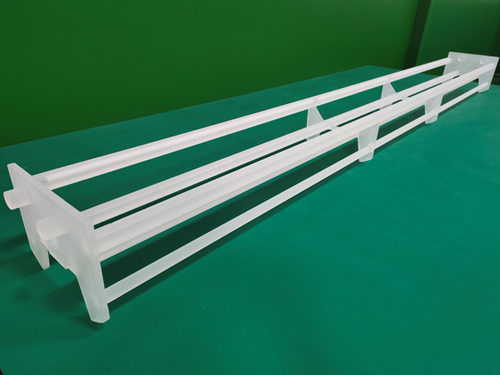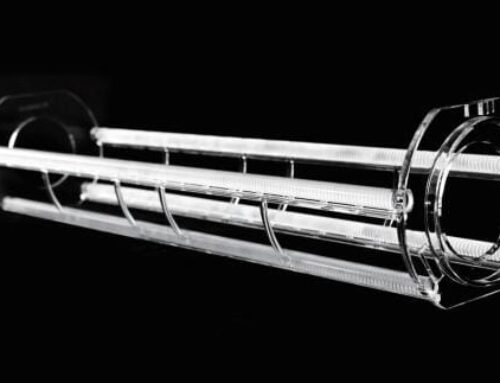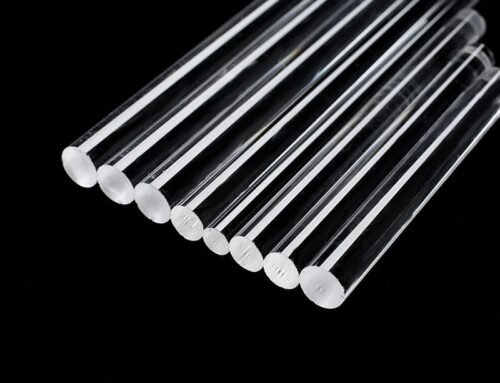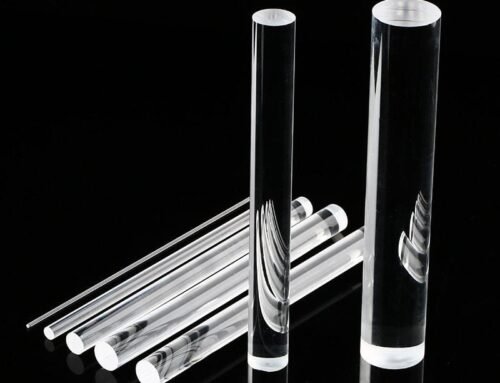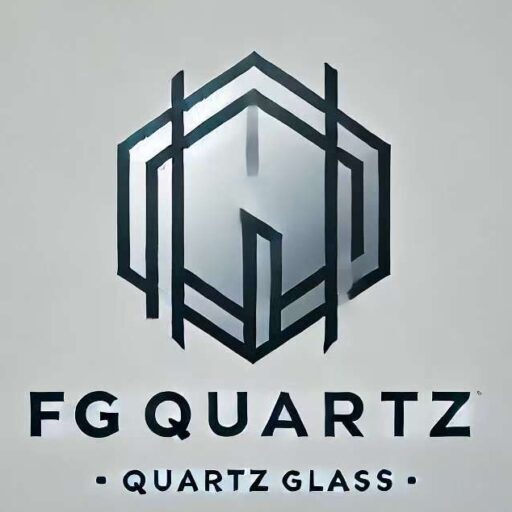Introduction to Quartz Glass
Quartz glass, also known as fused silica, is an engineered material derived from crystalline quartz through a process of melting and solidification. The primary composition of quartz glass consists of silicon dioxide (SiO2), which can be naturally sourced or synthetically produced. This unique composition lends quartz glass several distinctive properties that make it an essential material across various high-tech applications, particularly in the fields of plasma etching and diffusion equipment.
One of the most remarkable characteristics of quartz glass is its exceptional chemical resistance. This resistance allows it to withstand reactive substances without degradation, making it particularly suitable for environments where corrosive agents are present. In applications such as plasma etching, where gases and chemicals are commonly used, quartz glass maintains its integrity, thereby ensuring uninterrupted operation and accuracy in manufacturing processes.
Moreover, quartz glass exhibits remarkable thermal stability. It can tolerate extreme temperatures, both under rapid temperature fluctuations and prolonged exposure to high heat. This property is vital in industrial processes, as equipment operating within plasma etching systems often experiences significant temperature variances. In addition to thermal stability, quartz glass has a low coefficient of thermal expansion, minimizing the risk of thermal shock and enhancing the durability of the equipment.
Another notable property of quartz glass is its optical clarity. This feature is particularly important in applications requiring precise light transmission and wavelength-specific filtering. In diffusion equipment, clear optical pathways are essential for achieving desired results in processing materials with laser or light-based technologies. As a result, quartz glass serves not only as a structural element but also as a functional component in various optical applications.
Importance of Quartz Glass in Plasma Etching
Quartz glass is a fundamental component in plasma etching processes, primarily due to its unique physical and chemical properties that make it exceptionally suitable for semiconductor fabrication. Plasma etching involves the use of ionized gases to precisely remove material or pattern surfaces at a microscale, which is critical for developing intricate semiconductor devices. The high purity and low thermal expansion coefficient of quartz glass contribute significantly to its effectiveness in this application, ensuring a stable and consistent process during etching.
One of the vital attributes of quartz glass is its excellent resistance to both thermal shock and chemical erosion. Unlike conventional materials, quartz can withstand the high temperatures and reactive gases typically used in plasma etching without degrading. This resistance minimizes the risk of contamination, which is crucial in maintaining the integrity of the semiconductor fabrication process. Moreover, the low absorption of ultraviolet radiation by quartz glass makes it a preferred choice for photolithography applications, which are often employed in conjunction with plasma etching techniques.
Using alternative materials in plasma etching can introduce various challenges, including thermal instability and susceptibility to chemical attack. For instance, materials such as soda-lime glass may not endure the aggressive environments found in plasma etchers, potentially leading to damage and compromised results. In contrast, quartz glass ensures precise material removal and pattern fidelity, directly impacting the performance and reliability of the final semiconductor products.
Ultimately, the role of quartz glass in plasma etching is indispensable. Its properties facilitate the exacting requirements of semiconductor fabrication, enabling engineers to achieve high levels of precision and quality. Thus, quartz glass is not merely a choice but a necessity in optimizing the etching process and ensuring the advancement of semiconductor technology.
Types of Quartz Glass Used in Fabrication
Quartz glass, known for its exceptional purity and resistance to thermal and chemical environments, is vital in numerous applications, particularly in the fields of plasma etching and diffusion equipment. Among the various types of quartz glass, fused silica and synthetic quartz stand out due to their unique properties and capabilities.
Fused silica, produced by melting high-purity silica sand, offers remarkable thermal stability and a low coefficient of thermal expansion. This characteristic makes it ideal for high-temperature environments often encountered in plasma etching systems. Fused silica also boasts excellent optical clarity, which is essential for applications requiring precise monitoring of processes. However, one limitation of fused silica is its susceptibility to devitrification, a process that can occur if it is heated and cooled too rapidly, potentially compromising its structural integrity.
In contrast, synthetic quartz is manufactured through a chemical vapor deposition process. This method results in a material that is not only highly durable but also possesses superior homogeneity compared to natural quartz. The uniformity of synthetic quartz is particularly advantageous in precision optical applications and in environments where stability is essential. Additionally, synthetic quartz can be produced with specific thicknesses and dimensions tailored to particular requirements in plasma etching and diffusion equipment. Nevertheless, the production cost of synthetic quartz can be higher than that of fused silica, which could be a consideration in material selection.
Both types of quartz glass offer distinct advantages that contribute to their widespread use in fabrication. Choosing the appropriate type depends on the specific requirements of the application, including factors such as temperature resistance, optical clarity, and cost-efficiency. Understanding these differences allows engineers and manufacturers to optimize their processes and equipment performance in the ever-evolving landscape of semiconductor manufacturing.
Manufacturing Processes of Quartz Glass
The manufacturing processes of quartz glass are critical to ensuring that the material meets the stringent requirements of various applications, particularly in the semiconductor industry. The journey of quartz glass fabrication typically begins with the extraction and purification of natural quartz crystals, which serves as the primary raw material. This stage is essential; impurities can significantly affect the optical and thermal properties of the final product.
The first major step in the manufacturing process is the melting of purified quartz. This is accomplished in high-temperature furnaces that reach upwards of 1700°C. During melting, the silicon dioxide crystals are transformed into a molten state. This liquid quartz is then carefully monitored to prevent contamination and preserve desired characteristics. Various methods can be employed during this stage, including both electric and gas-fueled melting techniques, depending on the scale and specific requirements set forth by the end application.
Once the quartz has been melted, it goes through the shaping process. This can involve methods such as pressing, blowing, or casting the molten glass into various forms. Depending on the specific needs of semiconductor equipment, the shapes can range from simple sheets to complex geometries. The shaping process is crucial, as it determines the structural integrity and suitability of the glass for intricate uses in plasma etching and diffusion equipment.
Finally, polishing techniques are employed to achieve the required surface finish. This step often involves mechanical or chemical polishing, addressing surface imperfections that could affect light transmission and performance. Effective polishing not only enhances aesthetic appeal but also plays a pivotal role in ensuring the durability and operational effectiveness of the quartz glass during its applications. The meticulous attention to detail throughout the manufacturing processes greatly impacts the final quality and performance of quartz glass in demanding semiconductor environments.
Performance Characteristics of Quartz Glass
Quartz glass is widely recognized for its superior performance characteristics, particularly in high-temperature and corrosive environments. One of the key aspects of its functionality is thermal shock resistance, which allows quartz glass to withstand sudden temperature changes without cracking or breaking. This property is essential in applications such as plasma etching and diffusion processes, where materials may experience abrupt thermal cycles that could compromise their structural integrity. The high melting point of quartz glass, around 1,650 degrees Celsius, further contributes to its effectiveness in demanding thermal conditions, distinguishing it as a preferred choice in various industrial applications.
In addition to thermal shock resistance, quartz glass exhibits exceptional chemical durability. This characteristic is crucial when considering the interaction of various reactive gases and chemicals used in plasma etching processes. Unlike other glass materials, quartz does not readily react with acids, bases, or solvents, ensuring prolonged performance in corrosive environments. Its inert nature helps maintain the purity of the processed materials, which is vital for achieving the desired quality in semiconductor manufacturing and other precision applications. As a result, quartz glass remains dependable even when exposed to aggressive chemicals, making it a valuable material in laboratories and industrial settings.
Optical performance under plasma conditions is another critical factor that defines the utility of quartz glass. Its high transparency to ultraviolet and visible light enables effective monitoring and control of plasma processes. This optical clarity is vital for applications such as photolithography, where precise light wavelength interactions are required for patterning on semiconductor substrates. Moreover, quartz glass retains its spectral integrity even at elevated temperatures, ensuring consistent performance in high-energy environments. This combination of thermal, chemical, and optical properties underscores the essential role of quartz glass in the reliability and effectiveness of plasma etching and diffusion equipment.
Common Applications Beyond Plasma Etching
Quartz glass, renowned for its thermal stability and chemical inertness, is a pivotal material across various industries, extending far beyond its critical role in plasma etching and diffusion equipment. One notable application is in optical devices. Due to its unique transparency to ultraviolet (UV) light and ability to withstand high temperatures, quartz glass is frequently used in lenses, prisms, and windows. These optical components are essential in technologies like photolithography and microscopy, where precision and clarity are paramount.
In addition to optical applications, quartz glass is extensively utilized in chemical processing. Its resistance to harsh chemicals and high temperatures makes it ideal for use in reaction vessels, tubing, and fittings. The material’s low thermal expansion coefficient ensures minimal stress under temperature changes, enhancing the longevity and reliability of various chemical processes. Furthermore, quartz glass is often employed in high-purity environments, such as semiconductor manufacturing, where contamination must be minimized.
Laboratory equipment also benefits significantly from quartz glass usage. Items such as beakers, flasks, and cuvettes made from quartz provide accurate and reliable measurements in scientific research due to their ability to withstand thermal shock while maintaining purity. Many experiments require materials that do not interact with chemicals or processes, positioning quartz glass as a material of choice for researchers and laboratory technicians alike. Its versatility is not only evident in its capacity to perform under diverse conditions but also in its ability to be tailored for specific applications, thus affirming quartz glass as an indispensable component in several fields.
Trends in Quartz Glass Technology
Quartz glass technology is continually evolving, driven by advancements in manufacturing techniques and material enhancements that cater to the increasingly sophisticated requirements of various industries. One notable trend is the refinement in fabrication methods, including improved melting processes and controlled cooling, which yield higher purity quartz. This progresses toward a reduction in impurities enhances the mechanical and thermal stability of quartz glass, making it an ideal choice for diverse applications.
Another significant development is the introduction of specialized coating techniques. These coatings can enhance the reflectivity or transmissivity of quartz glass, allowing for innovative applications in optics and photonics. Furthermore, the incorporation of nanomaterials into quartz glass provides enhanced properties such as increased strength, reduced thermal expansion, and superior surface durability. Such innovations enable the use of quartz glass in more demanding environments, such as those found in semiconductor manufacturing and laser technologies.
The advent of emerging technologies, such as 3D printing and additive manufacturing, is also influencing quartz glass production. These methods allow for the creation of complex geometries and customized solutions that were previously challenging or impossible to achieve using traditional techniques. As a result, industries can leverage tailor-made quartz glass components that meet specific operational standards and performance criteria, thus expanding its applicability across multiple sectors.
Moreover, enhanced sustainability practices are gaining traction within quartz glass production. Companies are increasingly focusing on reducing waste and energy consumption during manufacturing processes. This shift towards eco-friendly operations not only improves the environmental impact of quartz glass production but also meets the growing demand from consumers and industries for sustainable materials.
In conclusion, ongoing innovations and trends in quartz glass technology are paving the way for enhanced performance, customization, and sustainability across various industries, solidifying its role as a critical material for plasma etching and diffusion equipment.
Challenges and Limitations of Quartz Glass
Quartz glass is widely regarded in the manufacturing sector for its unique properties, yet it presents certain challenges and limitations when employed in plasma etching and diffusion equipment. One of the primary concerns is thermal instability. In applications where extremely high temperatures are involved, quartz glass can exhibit significant thermal expansion, leading to the risk of cracking or even complete structural failure. This thermal sensitivity necessitates careful consideration of the operating temperature ranges to ensure both the safety and efficiency of the equipment.
Another notable limitation of quartz glass is its fragility. Despite its high resistance to thermal shock compared to other materials, quartz remains susceptible to mechanical stress. Handling and installation require meticulous care to avoid minor cracks or chips, which may compromise the integrity of the equipment. This fragility also raises concerns regarding the long-term durability of quartz glass components in harsh processing environments, where vibrations or impacts may occur. As a result, manufacturers must implement stringent handling protocols to mitigate the risk of damage.
To address these challenges, several alternatives to quartz glass have emerged in the industry. Materials such as synthetic sapphire and alumina offer enhanced thermal stability and greater mechanical strength, making them suitable substitutes in specific applications. Additionally, advancements in engineering techniques, such as the development of improved coatings, can enhance the thermal and mechanical properties of quartz glass, allowing it to withstand more demanding operational conditions.
In summary, while quartz glass is a vital material for plasma etching and diffusion equipment, its challenges, primarily thermal instability and fragility, cannot be overlooked. By exploring alternative materials and enhancements, manufacturers can optimize their processes and ensure more reliable performance in high-stress environments.
Conclusion and Future Outlook
In summary, quartz glass has established itself as an indispensable material in high-tech applications, particularly in plasma etching and diffusion equipment. Its unique combination of thermal stability, chemical resistance, and optical clarity renders it essential for industries such as semiconductor manufacturing and telecommunications. The properties of quartz glass facilitate precise etching processes, allowing for the development of increasingly sophisticated electronic components. As the demand for smaller, more efficient devices grows, the role of quartz glass in the fabrication processes of these technologies is expected to expand further.
Looking ahead, advancements in quartz glass production are anticipated to enhance its capabilities, leading to new applications beyond current limits. Research is ongoing to explore the integration of quartz with other materials, potentially improving its performance characteristics. Furthermore, as industries pivot toward sustainability, the development of eco-friendly manufacturing techniques for quartz glass may gain priority. Innovations in recycling and reusability could also reshape its lifecycle, contributing to more sustainable practices within the high-tech sector.
Emerging technologies such as quantum computing, advanced photonics, and even nanotechnology may require new forms of quartz glass optimized for specific functionalities. The adaptability of quartz glass will be crucial in meeting the ever-evolving demands placed on modern electronic components. Therefore, as research intensifies and technology progresses, the future outlook for quartz glass appears promising, with potential applications expanding well beyond traditional domains. Stakeholders in the high-tech industry must remain informed and engaged with these developments to leverage the full potential of this vital material.
